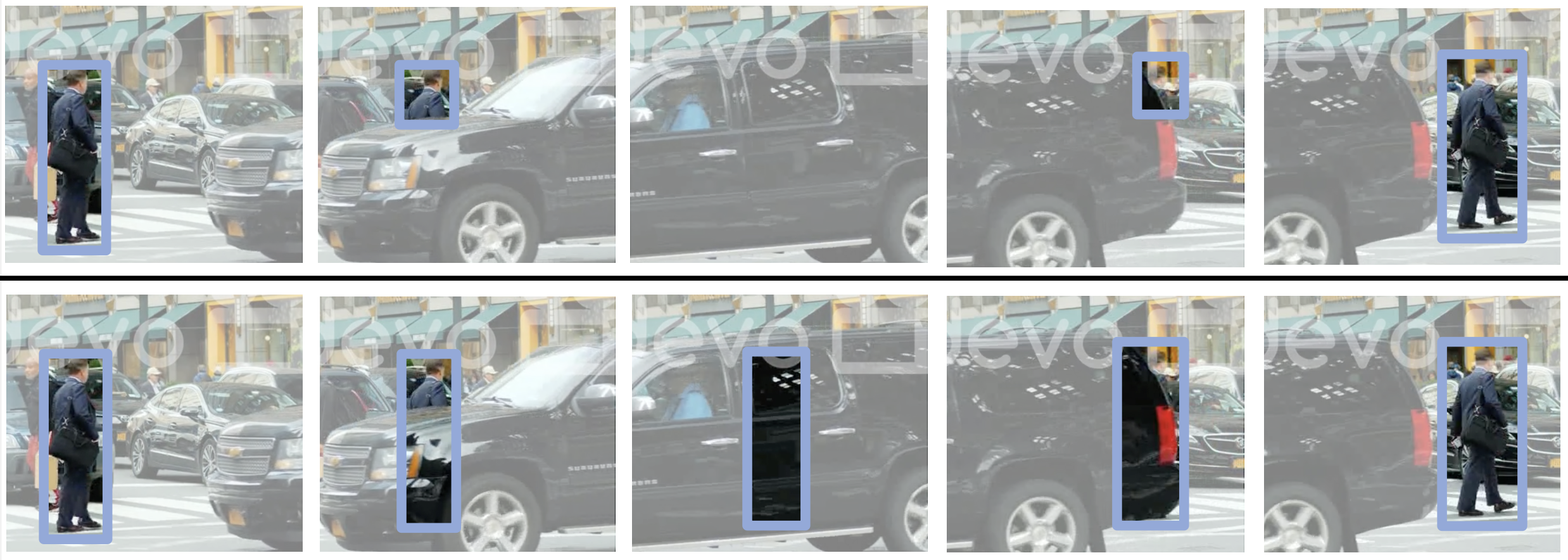Traditional vs. Amodal Tracking
Traditional perception (top) concentrates on identifying visible segments. Consequently, they face peculiar outputs such as vanishing bounding boxes or tiny box sizes under occlusion scenarios. Amodal perception (bottom) advances beyond conventional approaches by inferring complete object boundaries, even when certain portions are occluded.

TAO-Amodal Dataset
Our dataset augments the TAO dataset with amodal bounding box annotations for fully invisible, out-of-frame, and occluded objects across 880 categories. Note that this implies TAO-Amodal also includes modal segmentation masks.
Amodal Expander
Our Amodal Expander serves as a plug-in module that can ``amodalize" any existing detector or tracker with limited (amodal) training data. Here we provide qualitative results of both modal (top) and amodal (bottom) predictions from amodal expander.
Acknowledgements
The data collection efforts behind TAO dataset are crucial for the realization of TAO-Amodal. We also thank BURST dataset for its collection of modal mask annotations. Amodal annotations for this dataset were provided by AnnotateX. We thank Neehar Peri and Jason Zhang from CMU for their detailed feedback on the dataset and experiments.BibTeX
@article{hsieh2023tracking,
title={Tracking any object amodally},
author={Hsieh, Cheng-Yen and Khurana, Tarasha and Dave, Achal and Ramanan, Deva},
journal={arXiv preprint arXiv:2312.12433},
year={2023}
}